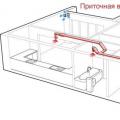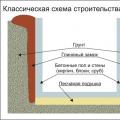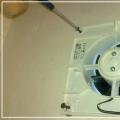Many garage owners have a basement or cellar where various food supplies can be stored: twists, jams, vegetables, etc. However, in order for the products to be stored for a long time, do not deteriorate and be fresh, it is important to ensure proper storage conditions. After all, high humidity, stale and dirty air will adversely affect them. To eliminate this problem, it is important to install a ventilation system in the basement to provide fresh air. The scheme is quite simple, so for work you can not hire specialists, but do everything yourself. You just need to choose the type of ventilation, purchase the material, take the tools and bring everything to life. Let's take a closer look at how to ventilate your garage cellar.
Proper air exchange
In addition to the fact that ventilation is necessary for the preservation of products, it is important for the building itself. If ventilation is not provided, then the room will dampen, collapse over time, and, in the end, it will need to be completely rebuilt. Condensation will appear in the cellar, and fungus will cover vegetables and walls. That is why you should not skimp on the ventilation system, but make it with high quality and according to all technologies.
Note! Moisture will rise from the basement to the garage, which is fraught with corrosion on car parts, bodywork, and other metal objects.
What does properly organized ventilation look like in the cellar of the garage? Look at the photo, which shows a diagram of the air exchange device.

By following these rules, you can make a quality ventilation system in the garage cellar. Now, let's move from theory to practice.
Choosing the type of ventilation in the cellar
It should be said right away that there are two types of ventilation of premises - natural and forced. What is the difference between them? Natural ventilation is quite simple and does not require special expenses. All you need is two pipes: supply and exhaust. In this case, the moisture from the cellar is removed by thermal convention. How? Due to temperature difference. Everyone knows that warm air rises. There it is caught by an air duct and transferred through a pipe to the roof. Under the influence of the generated draft, the air from the outside through the channels enters the inside, filling the room with itself. This is a continuous process. The advantage is low cost and ease of operation. However, the efficiency is a little lame, especially in the summer, when the temperature outside and inside will not differ much.
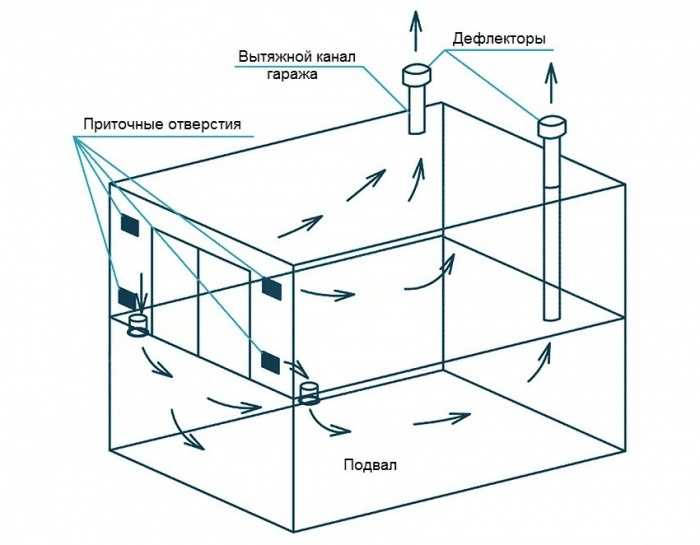
As for forced ventilation, here the scheme is slightly different. Instead of natural draft, the air escapes due to the operation of special mechanized devices - superchargers or fans. It is they who "drive" the air through the ventilation system. Its advantage is greater efficiency, quality and practicality, but you will have to pay several times more for it, and you will have to service the system regularly. In addition, the natural ventilation scheme is simpler, so it will be easier to do it yourself.
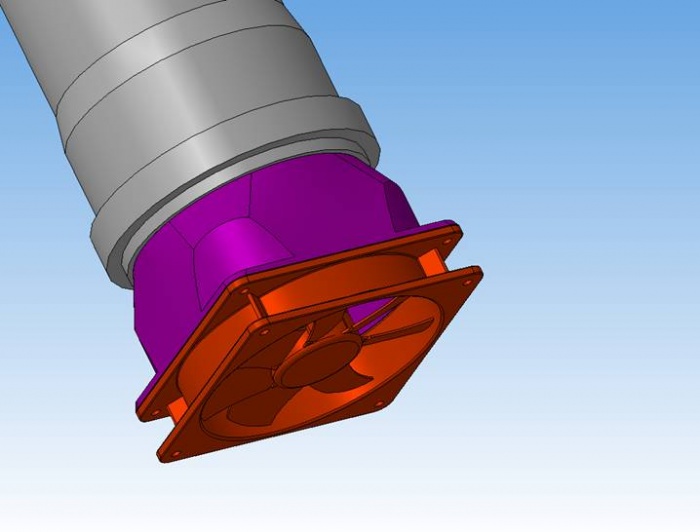
Note! These devices are powered by electricity. Therefore, please note that there will be additional costs for electricity.
All that depends on you is to choose the type and start the task. And we will consider how to make natural and forced ventilation.
Natural hood, device
Let's get to work. Making a hood in the cellar of the garage can be quite simple. Below is a diagram that needs to be implemented.
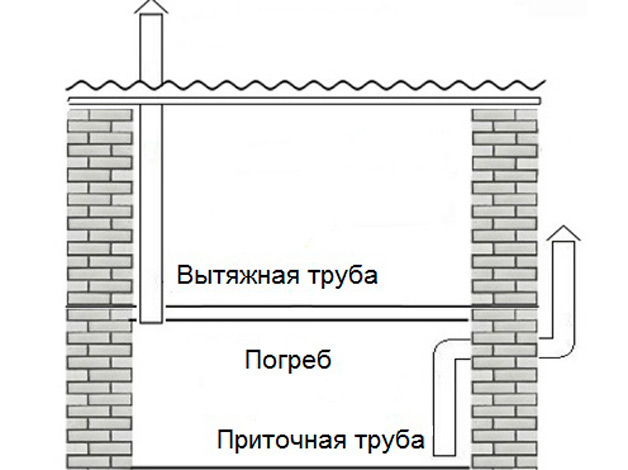
This is a traditional version of the cellar ventilation device by natural air exchange. An important point: the two pipes of the system must be in different corners of the cellar. One of them will be responsible for the influx of fresh air, and the second - for its exhaust. To ensure maximum efficiency of air circulation, the end of the supply pipe is placed at a distance of 20-50 cm from the floor.
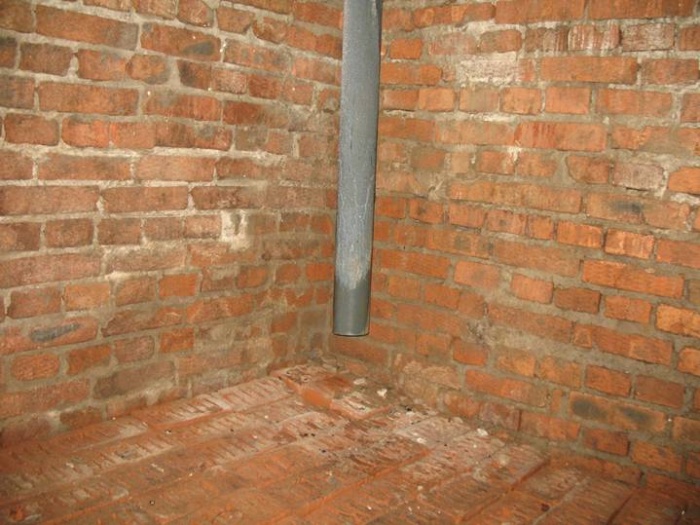
But the end of the pipe for venting should be under the ceiling.
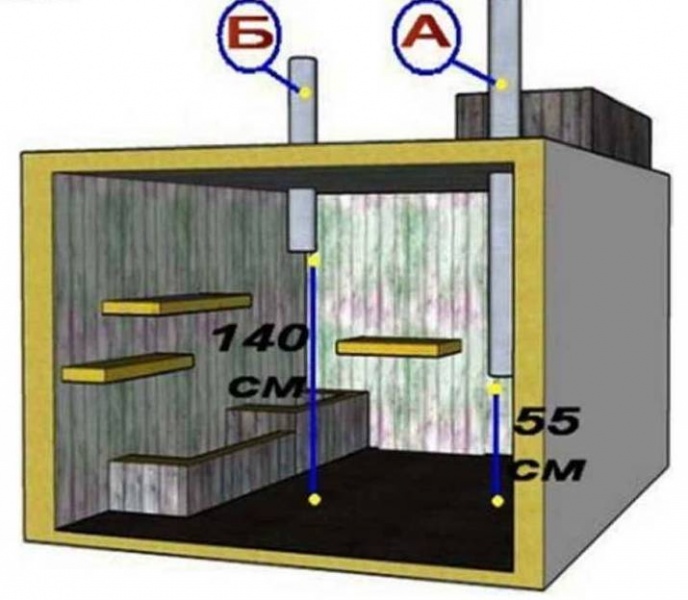
Advice! You can choose any pipes for ventilation: tin, asbestos cement, plastic, polyvinyl chloride, etc.
This is how the scheme looks like, according to which you can make natural ventilation in the cellar of the garage. This approach is not ideal, but you can ensure clean air and its circulation. What is the task? The steps are:
- It is required to make a hole in the wall for the supply pipe. The hole must be equal to the diameter of the pipe. After that, a pipe is inserted into it, fixed, and brought out by 20-30 cm.
- As for the exhaust duct, a hole must be made in the ceiling and the pipe must be brought out to the roof. The distance can be 40-45 cm from the roof or more. The end of the pipe must be under the ceiling.
- To prevent rodents, birds and dirt from getting inside the ventilation, all openings must be covered with a grate. At the end of the exhaust pipe, you can put a fungus (umbrella) from precipitation.
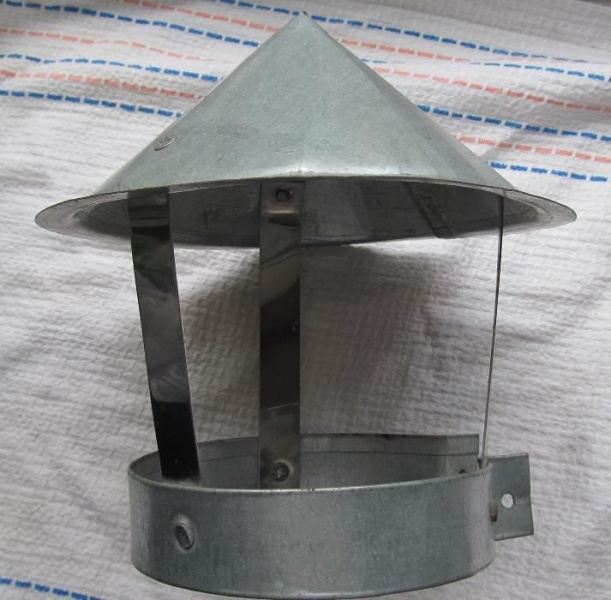
To control the ventilation of your cellar under the garage, you need to install dampers. Thanks to them, you will regulate the amount of air and its flow in the cold season, so that the room does not freeze completely, and the products in the cellar do not freeze.
Forced ventilation device
As already noted, the difference between forced ventilation and natural ventilation is the presence of electric fans in the system. At the same time, the ventilation scheme of the cellar in the garage does not change much. Making it yourself will be a little more difficult, but still possible. The main advantage of such an organization of ventilation is the support of optimal moisture and temperature in the basement, regardless of the capricious weather and season.
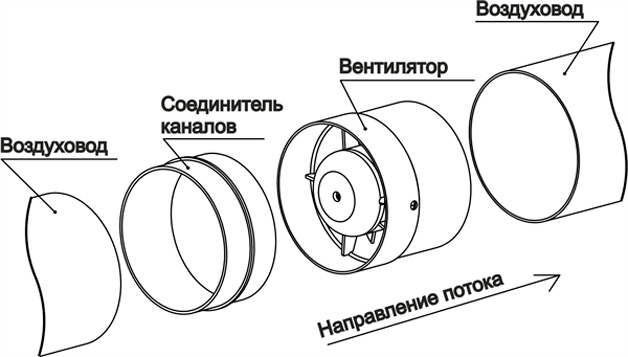
So, to make forced ventilation, you do not need to reinvent the wheel. In exactly the same way, install and secure the pipes. Then mount the fan inside the exhaust pipe. So you can provide controlled air access at the moment when you need it. Please note that you can make such a hood not only using a fan. You can come to the rescue:
- a rotary diffuser-weather vane, a fairly simple device that needs to be installed at the end of the exhaust pipe outside the building. It works from a gust of wind and enhances traction in the system;
- the deflector is also able to provide effective ventilation by creating a rarefied air zone. It promotes high-quality air exchange. It also needs to be installed on the head of the exhaust pipe;
- a popular and simple way is to hold and fix a heating bulb inside the exhaust pipe. By heating the air in the channel, it will be released much faster.
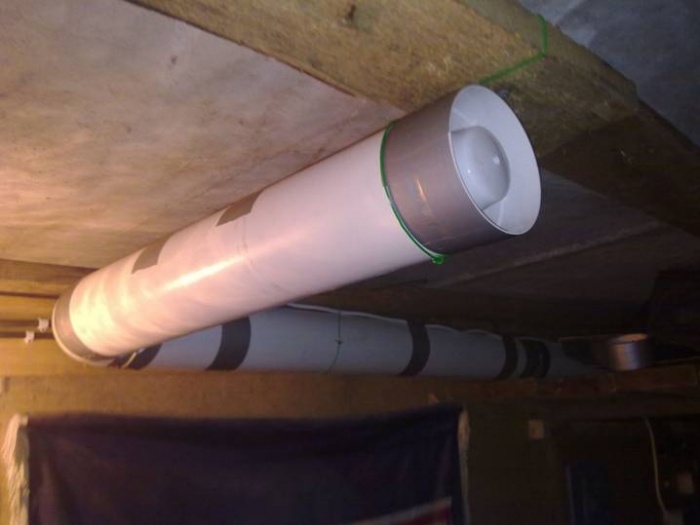
These are simple ways that you can implement. But, there is also the most advanced method of ventilating the cellar in the garage - mechanized. In this case, a special monoblock is responsible for air circulation. It contains special software responsible for managing the modular system. The whole process is automated, so this unit can be called one of the best. Although, as they say, you have to pay for quality, so the price of such a system is quite high.
We examined the popular types of ventilation in the basement of the cellar and found out how they work. Now the whole thing is up to you: choose the appropriate method and start implementing it. Additionally, you can watch a video on how to do it yourself.

